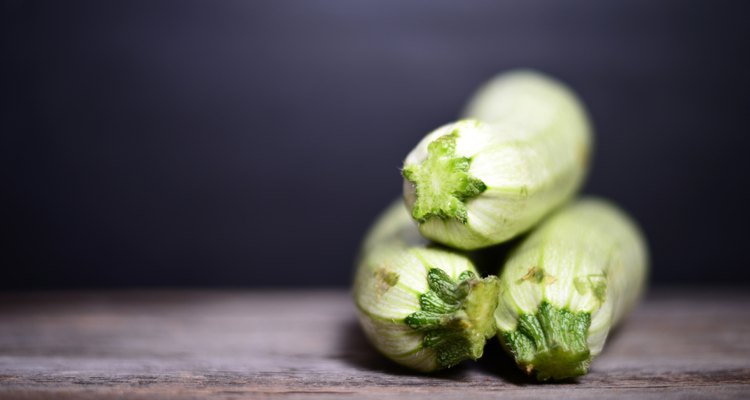
MalyDesigner/iStock/Getty Images
The glycemic index of green squash depends on the specific type of squash. The two most common types of green squash are green zucchini and kabocha squash. Each of these types has a different GI rank; green zucchini has a GI score of 50, which makes it a low-GI food. Kabocha squash, like others with intensely orange flesh, has a GI score of 75 making it an intermediate-GI food.
Interpreting the GI Score
The glycemic index (GI) is based on how much blood sugar rises after consuming a specific food as compared to the rise in blood sugar after consuming a known amount of glucose or refined white bread. High-GI foods have a score of 75 or above. Intermediate-GI foods have a score between 55 to 75. Low-GI foods have a score less than 55. The GI is useful for meal planning for diabetics and people wishing to prevent an extreme rise and fall in blood sugar.
Green Zucchini
Green zucchini is a low-GI food also considered a "free" food because it causes no appreciable elevation in blood sugar. Green zucchini is a type of summer squash and is very low in calories and high in fiber and vitamin A. One-half cup of cooked zucchini has 15 calories, less than 0.5 g fat and less than 5 mg sodium. One cup of cooked zucchini provides up to 20 percent of the recommended daily allowance for vitamin A and manganese, and 10 percent of the recommended daily allowance for folate.
Kabocha Squash
Kabocha squash is sweeter than green zucchini and has a GI score of 75, which makes it an intermediate-GI food. Kabocha squash is a variety of winter squash with a dark green rind marked by lighter green or white striations and bumps. In spite of its rough texture, the rind of a kabocha squash is soft enough to eat after cooking. One cup of cubed, cooked winter squash contains 115 calories including 30g carbohydrate and 9g fiber. Winter squash is high in beta-carotene, providing nearly 20 percent of the recommended daily allowance in a one cup serving.
Considerations
The way a food is prepared can change its GI score by making carbohydrates more or less available for digestion. For example, a medium-sized russet potato baked with the skin has a GI score of 87 whereas a one cup serving of mashed potatoes has a GI score of 97. You can also take steps to plan meals that account for some intermediate to high-GI foods. Adding fat to your meal will slow digestion and absorption, causing a slower rise in blood sugar. Consider adding oil or butter to green squash.
Related Articles

Garbanzo Beans on the Glycemic Index

Nutrition in Calabaza Squash

Asian Secret to Removing Cellulite

Strawberries & Acne

Foods From Rainforest Plants

Is Butternut Squash a Good Substitute ...
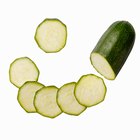
How to Cook Zuccini & Squash in a ...
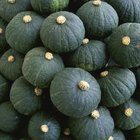
Can I Eat the Peel on Kombucha Squash?
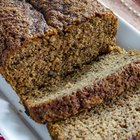
How to Cook With Green Fuzzy Squash
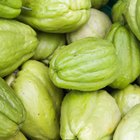
How to Grill Chayote Squash

How Many Calories in Baked Yellow ...
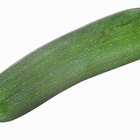
Calories in a Large Zucchini

How to Cook Buttercup Squash
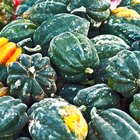
How to Boil Acorn Squash

What Is Yellow Zucchini?

Baked Cubed Squash
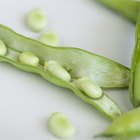
Nutritional Facts of Fava Beans

Can Oranges Cause Acne?

Carbohydrates in Zucchini

Why Does the Tanning Bed Make You Happy?
References
Writer Bio
Janelle Commins started writing professionally in 2007. She has written for the "UCLA Total Wellness" magazine on nutrition and fitness topics that are of interest to young adults. Her work has also appeared in various online publications. She holds a Bachelor of Science in nutrition science from University of California, Davis, and a Master of Science in public health from University of California, Los Angeles.
Photo Credits
MalyDesigner/iStock/Getty Images